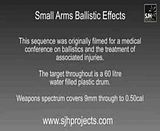Ya, it does get confusing, even more so when people start creating this things like "knock down index" and "one-shot-stopping power"
Here is my thinking on it, since my primary gun is 9mm I look at the 9mm round. I think if a round penetrate to about 14" in bare ordinance gelatin (no denim, no dry wall etc...) and it expand to about .60 caliber - it probably is going to be an effective round. That doesn't mean I can shoot a bad guy in thumb and have it spin him around, send him flying backwards and put him down. It means to me, that if I shoot center of mass the bullets are going to damage and distrupt vital tissue, which in turn should quickly stop the aggression.
When I stand with my back to wall and put a ruler just at chest level - I measure about 12" from front to back. But that doesn't mean that if I'm shot, a bullet that goes 14" in bare ordinance gelatin is going to zip through me and kill someone standing behind me.
The ordinance gelatin tests don't predict exactly what a bullet is going to do in any siven shooting. What the gelatin tests provide is a consistent base line data set to build a correlation from.
So you can say - for example that if bullet such and such penetrates 14.2 inches and expands to .59 caliber in the denim gelatin test, - statistically it will be an effective round. Effective to me means that if I shoot center of mass the bullets are going to damage and distrupt vital tissue, which in turn will quickly stop the aggression.

